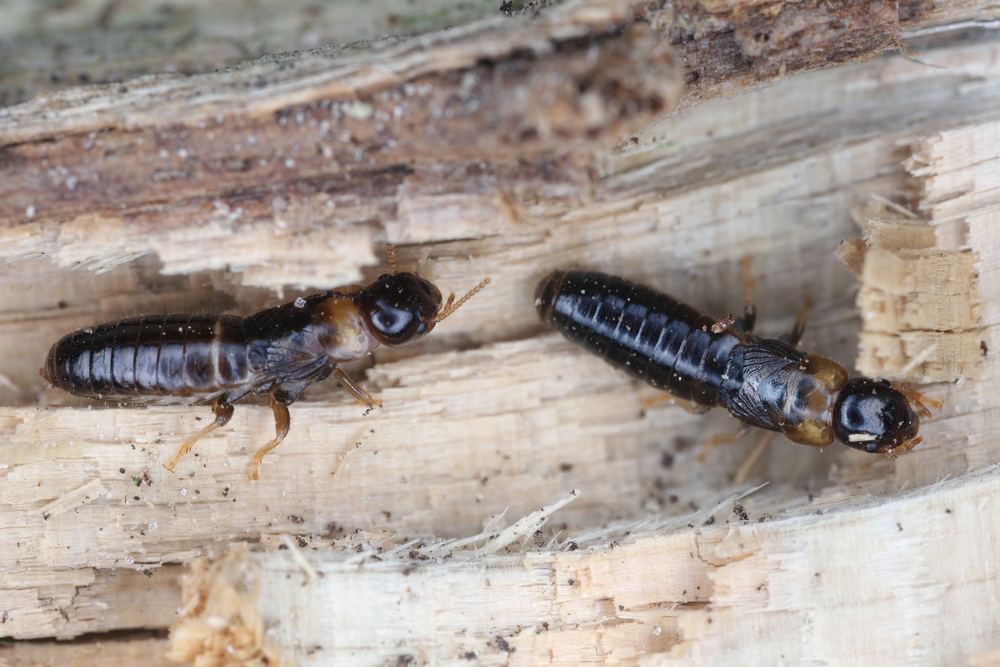How To Tell if You Have Drywood Termites? | CA

Southern California homeowners know the beauty of their region comes with certain challenges, and one of the most damaging among them is the threat of Drywood termites. Unlike subterranean termites that live in the soil, Drywood termites nest entirely within the wood they consume, making them especially insidious and difficult to detect. Learning to identify these pests is critical for protecting your home from costly structural damage. This article will guide you through the essential information about Drywood termites, the subtle clues they leave behind, and how you can safeguard your property if you suspect an infestation.
Understanding Drywood Termites in Southern California
Drywood termites are a distinct species of termite perfectly adapted to California’s mild, dry climate. Unlike their subterranean cousins, Drywood termites do not require contact with the soil. Instead, they live, feed, and reproduce within the same wood source, often going undetected for years. They thrive in wood with low moisture content, making wooden structures, furniture, and even framing lumber in homes vulnerable to attack. Southern California’s warm weather provides ideal breeding conditions for these insects, which swarm seasonally, typically during the late summer and early fall. When a colony reaches maturity, flying termites known as alates take off in swarms to establish new colonies, making this period the most likely time for homeowners to notice them.
Because Drywood termites do not need soil contact, they can establish colonies in almost any part of a structure, from roof rafters to window frames. Their cryptic nesting habits and the fact that they can survive on very little moisture mean that even well-maintained homes in CA can fall victim to these stealthy invaders. Understanding their biology and behavior is the first step toward preventing or identifying an infestation before serious structural damage occurs.
Common Signs of Drywood Termites
Identifying an infestation of Drywood termites begins with knowing what evidence they leave behind. Unlike subterranean termites, Drywood termites push their waste, known as frass, out of their galleries through kick-out holes. This results in tiny, sand-like pellets that collect below infested wood. The color of these pellets often matches the shade of the wood being consumed, making them harder to spot but still a reliable indicator.
Another important sign of Drywood termites is the appearance of small holes in wooden surfaces, typically about the size of a pinhead. These holes are exit points used by the swarmers to leave the colony. Homeowners may also notice discarded wings left behind by swarmers after a nuptial flight, usually near window sills or other light sources. The presence of these wings is a clear sign that a new colony may be forming.
In more advanced infestations, wood might sound hollow when tapped, and its surface may appear blistered or cracked due to the galleries carved inside. Unlike subterranean termites, Drywood termites do not create mud tubes, so any signs of structural weakening without mud tubes are strong clues of their presence. Keeping a sharp eye on these subtle signals can make all the difference in catching an infestation early.
The Importance of Professional Inspections
While vigilant homeowners can spot certain signs of Drywood termites, a professional inspection is essential for thorough detection. Licensed pest control inspectors in Southern California are trained to recognize even the faintest evidence of these pests. They use specialized tools such as moisture meters, infrared cameras, and borescopes to examine inside walls and hidden cavities where Drywood termites often reside.
Professional inspections also help differentiate Drywood termites from other wood-destroying organisms, such as carpenter ants or wood-boring beetles, which can cause similar damage but require different treatment methods. In California, pest control companies must follow strict licensing guidelines, so homeowners can feel confident in the accuracy of their findings and recommendations.
Inspections are particularly crucial when buying or selling a home in CA, as termite damage can drastically affect property value. Termite inspectors provide a detailed report that includes active infestations, past infestations, and conditions conducive to future attacks. Acting on these reports promptly can save thousands of dollars in repairs and safeguard the long-term value of your investment.
Treatment Options for Drywood Termites
If a professional confirms the presence of Drywood termites, there are several termite treatment options available, depending on the size and location of the infestation. One of the most effective and well-known treatments is structural fumigation, commonly referred to as tenting. During this process, the entire structure is enclosed and a gas fumigant is introduced to penetrate all wood members and eliminate the termite colony.
While fumigation is highly effective, it can be inconvenient for homeowners who must vacate the premises for a few days. For smaller, localized infestations, spot treatments using liquid or foam insecticides can be a practical alternative. These treatments are injected directly into infested wood, killing termites within their galleries. Some companies may also use heat treatments that raise the temperature of the wood to levels lethal to termites.
Regardless of the treatment chosen, follow-up inspections are vital to ensure that the colony has been fully eradicated. Southern California’s climate allows Drywood termites to easily re-infest if proper preventative measures are not maintained, such as sealing cracks and crevices and maintaining a regular inspection schedule.
Preventing Future Infestations
Prevention is always easier and cheaper than dealing with a full-blown infestation. Homeowners in CA can take several proactive measures to discourage Drywood termites from targeting their property. Start by sealing all potential entry points, including gaps around windows, doors, and roof eaves. Ensuring that all exposed wood is properly painted or varnished creates a barrier that discourages termite entry.
Additionally, keeping attics, crawlspaces, and other wood storage areas dry and well-ventilated reduces the attractiveness of these spaces for Drywood termites. Avoid storing firewood or scrap lumber close to your home, as these materials can serve as bridges to bring termites closer to your structure. During the swarming season, use screens on attic vents and windows to keep winged termites from gaining access.
Annual professional termite inspections are highly recommended for Southern California homeowners. These routine checks can identify vulnerabilities before termites establish themselves. Early intervention is the key to keeping your home safe from the destructive habits of Drywood termites.
Conclusion
In the end, protecting your home from Drywood termites is about knowledge, vigilance, and timely action. By understanding the signs of Drywood termites, partnering with professional inspectors, and implementing strong prevention strategies, homeowners across CA can rest easier knowing they have fortified their homes against one of nature’s most persistent pests.
If you suspect Drywood termites are compromising the safety and integrity of your home, do not delay. Reach out to a qualified pest control professional in your area to get a thorough assessment and take decisive steps to protect your investment. Drywood termites may be stealthy, but with the right approach, you can stay one step ahead and keep your Southern California home strong and secure for years to come.
Need Pest Control Near You?
If you’re dealing with unwanted pests in your home, business, or industrial facility, don’t wait—reach out to us at Access Better Pest Management. Our expert team in Corona, CA is ready to deliver tailored solutions that go beyond just eliminating infestations—we ensure long-term protection and peace of mind. From thorough termite and rodent inspections to customized treatment plans and damage repairs, we’ve got you covered. Let us put our experience and dedication to work for you—contact us today and take the first step toward a safer, pest-free environment.
